It’s October and summer’s bounty of insects seems to be a fading memory, as if hiding behind the autumn mist that tenaciously clings onto the distant hills. To my relief, there are still the bees, butterflies, hoverflies and wasps that will limber out of their dormant state, as if awakened by the first touch of sunlight. The dewdrops sticking to their hairy bodies gradually evaporate, enabling their thoracic muscles to tighten and pull their membranous wings into a frenzy of frenetic motion. They fly in search of the last dregs of nectar that can be found and it’s to the abundant and late flowering ivy that all manner of these six-legged wonders end up congregating. The Red Admirals and Painted Ladies, migrant butterflies from far off shores, having flown vast distances, can be seen balancing precariously on the ivy’s glossy leaves, delighting in rolling out and dipping their long proboscises onto the globular constellations of golden efflorescence’s.
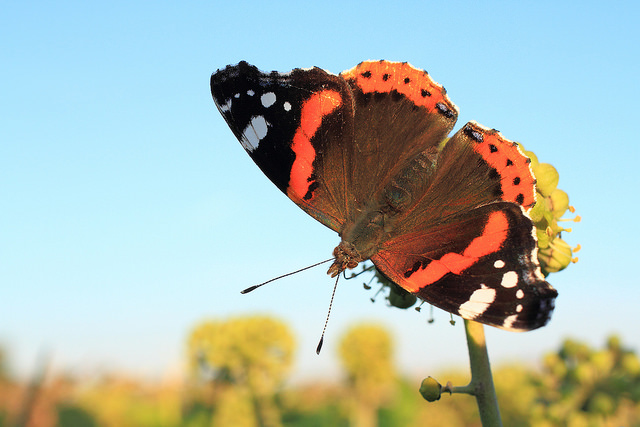
Red Admiral (Vanessa atalanta)
The months of September and October see a proliferation of Red Admirals as they take
advantage of the nectar found inside the late flowering ivy
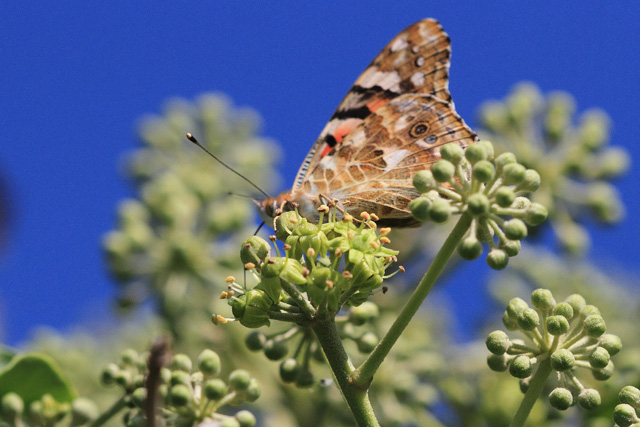
Painted Ladies (Vanessa cardui)
This species is a long-distance migrant to our shores having originated in north Africa.
The flowers are only produced on mature ivy, which has oval leaves. The well-known five pointed leaves are found on immature ivy, which does not have flowers. The flowers are not showy, and many people are unaware that ivy even has flowers.
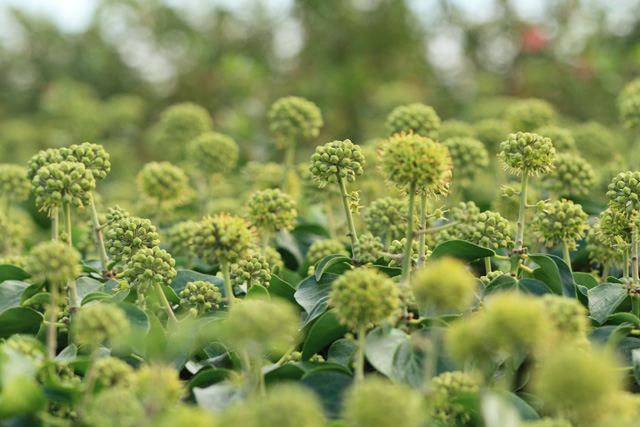
Ivy (Hedera Helix)
When the ivy blooms in September it attracts a plethora of nectar feeding insects
The climbing stems, glossy leaves and bulbous clusters of black berries of ivy are a familiar sight across town and country. Growing up trees and old walls, carpeting the ground, and forming thick bushes if left unchecked, this creeping plant is not actually a parasite, as many might think, but only gets support from its host. This host might be our house, a shed or a tree in woodland, but none of them will suffer for it.
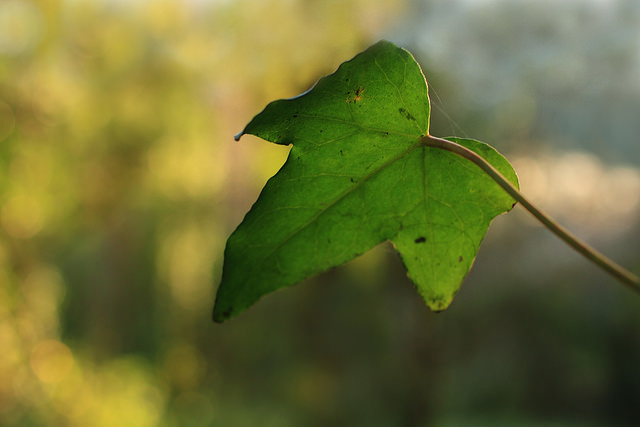
Flowers are only produced on mature ivy, which has oval leaves. The well-known five-pointed
leaves are found on immature ivy, which does not have flowers.
The yellow-green flowers of ivy are a great source of nectar for other autumn insects such as Hornets, Honey Bees and Hoverflies. Ivy also provides roosting sites for bats and birds, and a home for hibernating insects like Brimstone butterflies. Holly Blue butterflies lay eggs on ivy in the summer and on holly in the spring.
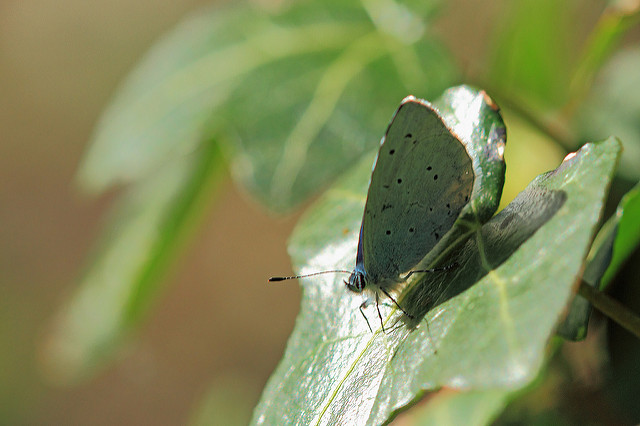
Holly Blue (Celastrina argiolus)
Back in the Spring, this Holly Blue was captured resting on ivy (its preferred food plant).
It fidgeted in the sunshine with wings firmly closed, preferring to drink honeydew rather than necta.
The most abundant insects seen feasting on ivy are generally honeybees, social wasps, hoverflies, and flies. Bumble bees, solitary wasps and butterflies generally occur in smaller numbers. If you’re lucky you may also see the beautiful ivy bee (Colletes hederae), a solitary bee species that specialises on feeding on ivy flowers. It does not live in colonies. Each female builds a small nest in the soil. Little is known about the ecology of this species so there is a lot still to discover.
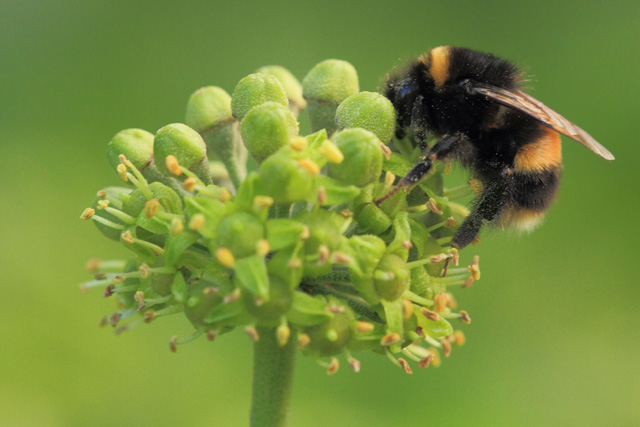
Late foraging availability in September/October is essential for bumble bee species to
complete their life cycle. They need nectar to provide energy and pollen to provide protein
for larval development. They will forage between 1 – 2km from the nest to find such rich
pollen and nectar sources.
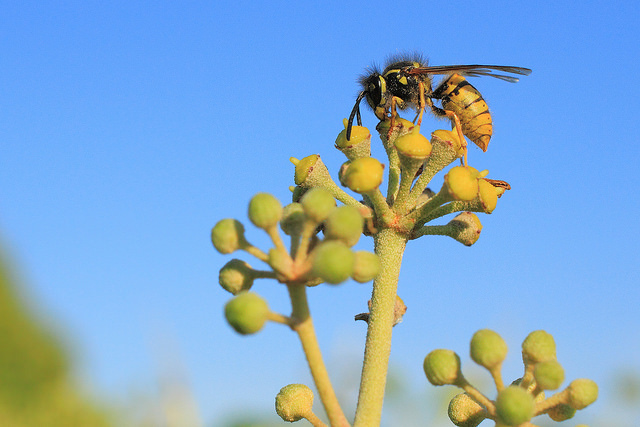
Common Wasp (Vespula vulgaris)
Dusted with pollen and feeding on ivy flowers. The adults require high energy sugary foods
such as nectar and fruit; they also feed on sugary substance exuded by the larvae.
The ecological importance of ivy, particularly as the main source of pollen and nectar is of vital importance to the survival of many insects in the autumn. Its name, Hedera helix (helix – meaning spiral) alludes to a spherical vortex, spiraling through its own centre and combining both the inward and outward directions of movement. As the winding spiral, it constitutes the insect’s journey to the still center where the source of food is found. The life-giving properties of ivy have also permeated much of our subconscious and are still evident in folkloric customs and traditions. So we find, the ancient Greeks regarding it as the emblem of fidelity where priests would present a wreath of ivy to newly married couples. Today it is still the custom for bridal bouquets to contain a sprig of ivy. In contrast, we find the wearing of a wreath of ivy leaves around the brow is supposed to prevent one from getting drunk, as it was dedicated to the Roman god Bacchus, the God of Intoxication, who is often depicted wearing a wreath of ivy and grapevines.
In the spirit of Bachchus, let me finish this post by raising my glass, in praise of ivy.

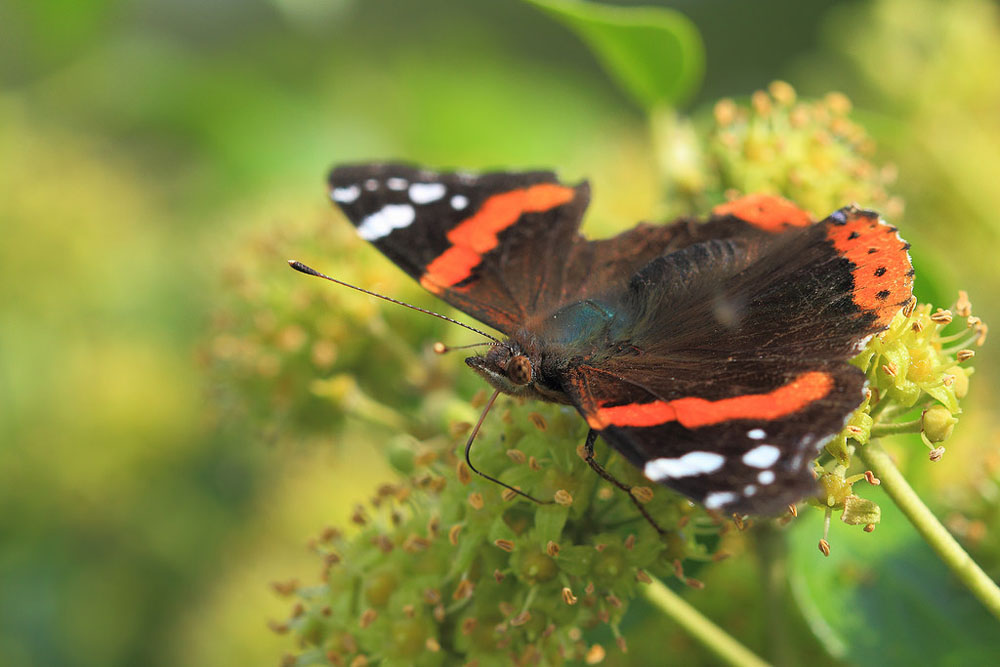
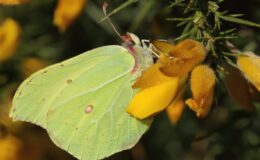
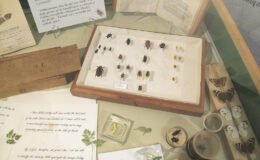
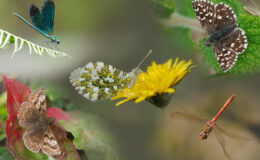
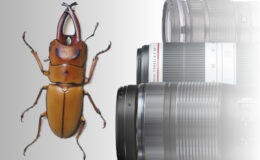
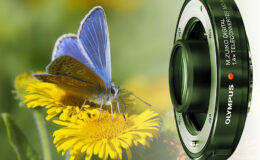
Leave a Comment